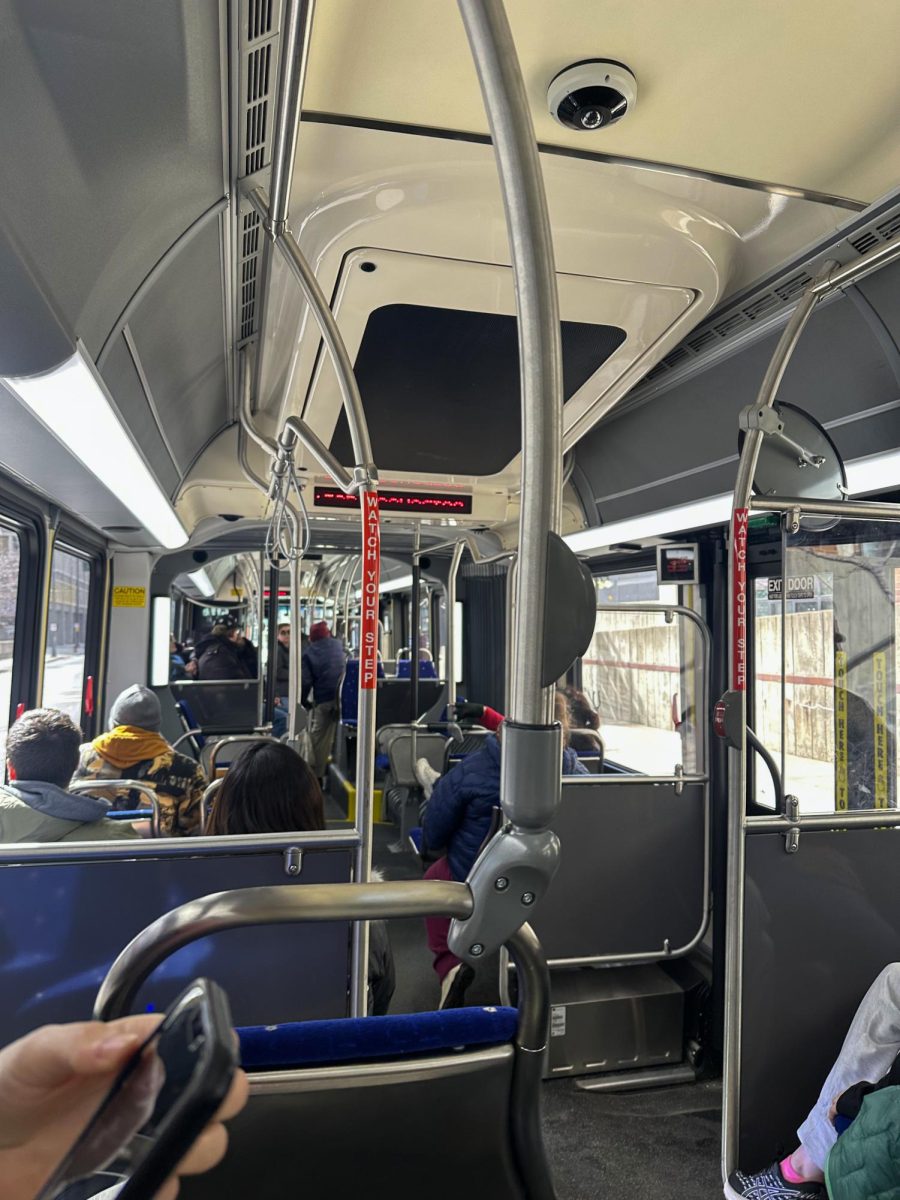On Saturday, March 22, Metro Transit officially opened the Metro Gold Line: the Twin Cities’ first gold standard Bus Rapid Transit line. The Gold Line connects a 10-mile corridor from downtown St. Paul to its eastern suburbs, including Woodbury and Oakdale, Minn., with a 10-minute frequency.
The new Metro Gold Line premiered with community events on opening day in Woodbury and at Sun Ray Transit Center in St. Paul, two of the locations served by the Gold Line. These events featured food trucks, tabling from community organizations, free transit treats like coloring sheets and foldable buses and surprise visits from Metro Transit’s mascot Skip Traffic.
Later that week, Move Minnesota, a local non-profit transit advocacy organization, held a Gold Line celebration at Rice Park in downtown St. Paul on Thursday, March 27. The event involved discounted pizza, a jazz band and gold beaded necklaces handed out by employees from the organization.
From transit advocates to Metro Transit employees, there was a shared excitement in the air last Thursday for the opening of the Gold Line.
“We are just so excited that we finally got it to open and can provide easy access to transportation to the East Metro,” Edwin Awason, project manager for the Gold Line, said.
“The Gold Line, it’s a big deal,” Max Singer, mobility and research coordinator for Move Minnesota, said. “It is recognized as the first gold standard bus rapid transit as that it travels the majority of the route on a dedicated [right of way lane], so it does not have to worry about traffic or cars or bikes.”
Currently, the other rapid bus transit routes throughout the Twin Cities, such as the Metro A Line, run on the same city streets as cars and are of the same style as a local bus. However, the Gold Line primarily runs routes on dedicated bus lines on the side of Interstate 94, and the buses are longer and have wider aisle and seats that can accommodate more passengers at once. In addition, Gold Line buses can “ask” for priority at stoplights.
The project cost $505 million, with the majority of funding coming from the Federal Transit Administration, Ramsey County and Washington County. The Gold Line started development in 2021 with construction beginning in fall 2022.
Based on data from Metro Transit, approximately 14 percent of households in the East Metro do not have access to a car and rely on public transportation. In addition, there are about 93,500 jobs located within a half mile of a Gold Line stop.
“I’m from Sun Ray, and I think this is useful because I work at the Science Museum [of Minnesota],” self-proclaimed ‘biggest fan of Metro Transit’ Michael Maceda said. “I need to use this to commute … It’s just so nice.”
This is only the first step for the Gold Line. According to Metro Transit, there are plans to extend it into downtown Minneapolis by 2027 to serve as an additional transit line connecting Minneapolis and St. Paul downtowns. This new section of the Gold Line will replace the local 94 bus and will continue to run along I-94 in a dedicated bus lane. Metro Transit estimates that Gold Line buses will take as little as 15 minutes to go between the two downtowns, compared to the 45 minutes that it takes the Green Line light rail to do the same trip today.
The Gold Line is one among several different expansions and improvements that Metro Transit is completing. The next one to open will be the Metro B Line that will replace the local 21 bus line. The B Line will run along Selby and Marshall avenues in St. Paul and Lake Street in Minneapolis, including a stop at the intersection of Snelling and Dayton, providing an additional public transit option nearby Macalester’s campus. The B Line is scheduled to open on June 14.
Both the Gold Line and the B Line are part of Metro Transit’s long-term goal to convert local bus routes that they have identified to be overcrowded into Bus Rapid Transit lines. While these routes are not proposed to run gold standard Bus Rapid Transit, they will still have more frequent service and higher capacity buses compared to local buses routes to fit growing demand.
Other Metro Transit expansions are the E Line replacing the local 6 bus line running in Minneapolis and Edina, Minn., scheduled to open by the end of this year. Metro Transit’s agenda before 2030 includes the F Line replacing local bus 10, running in Minneapolis and terminating in Blaine, and the G Line replacing local buses 62 and 68 running from West St. Paul to Little Canada. In addition, construction has begun on expanding the Green Line to now include towns in the Twin Cities’ western suburbs, connecting St. Louis Park and Minnetoka, Minn. with a terminus in Eden Prairie, Minn.
While the opening of the Gold Line may have fewer immediate impacts on Macalester students compared to projects like the B line, the new bus line marks the beginning of expanding opportunities for public transportation in the Twin Cities.








